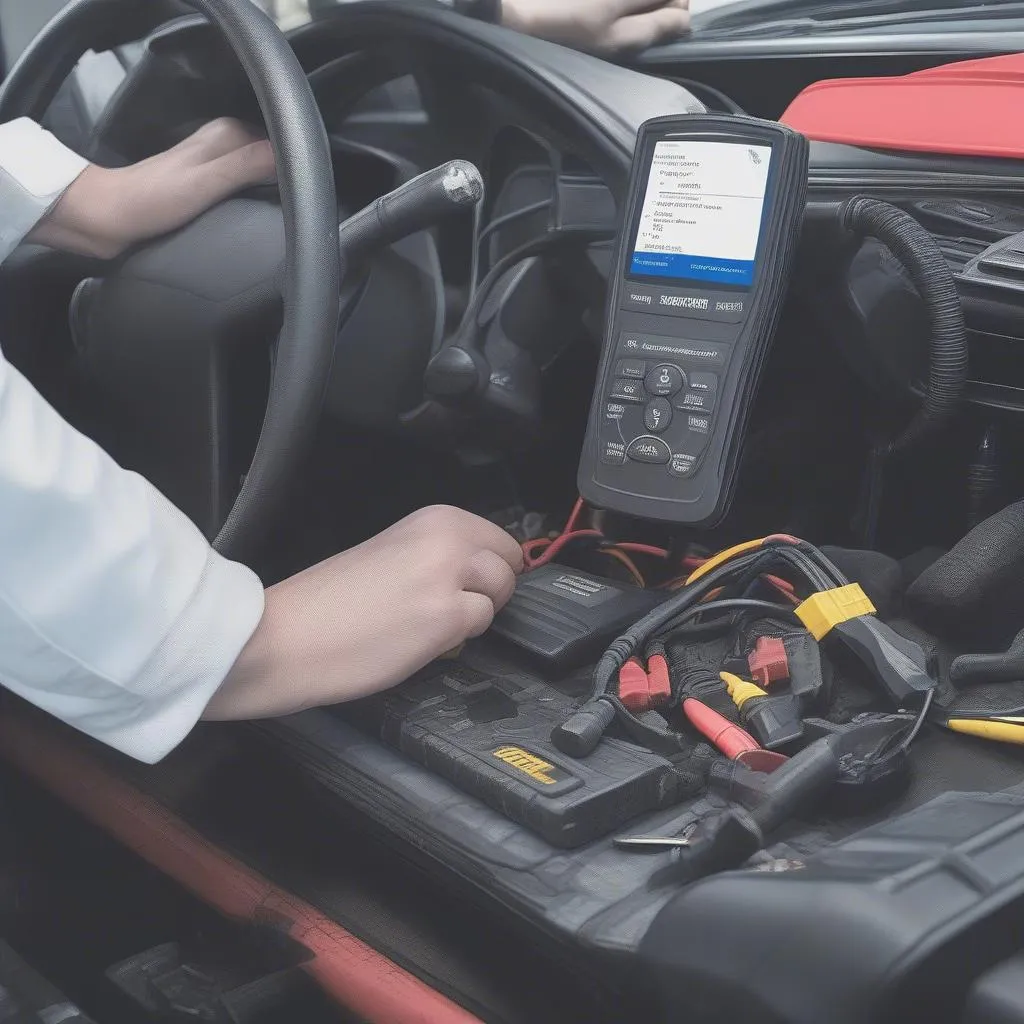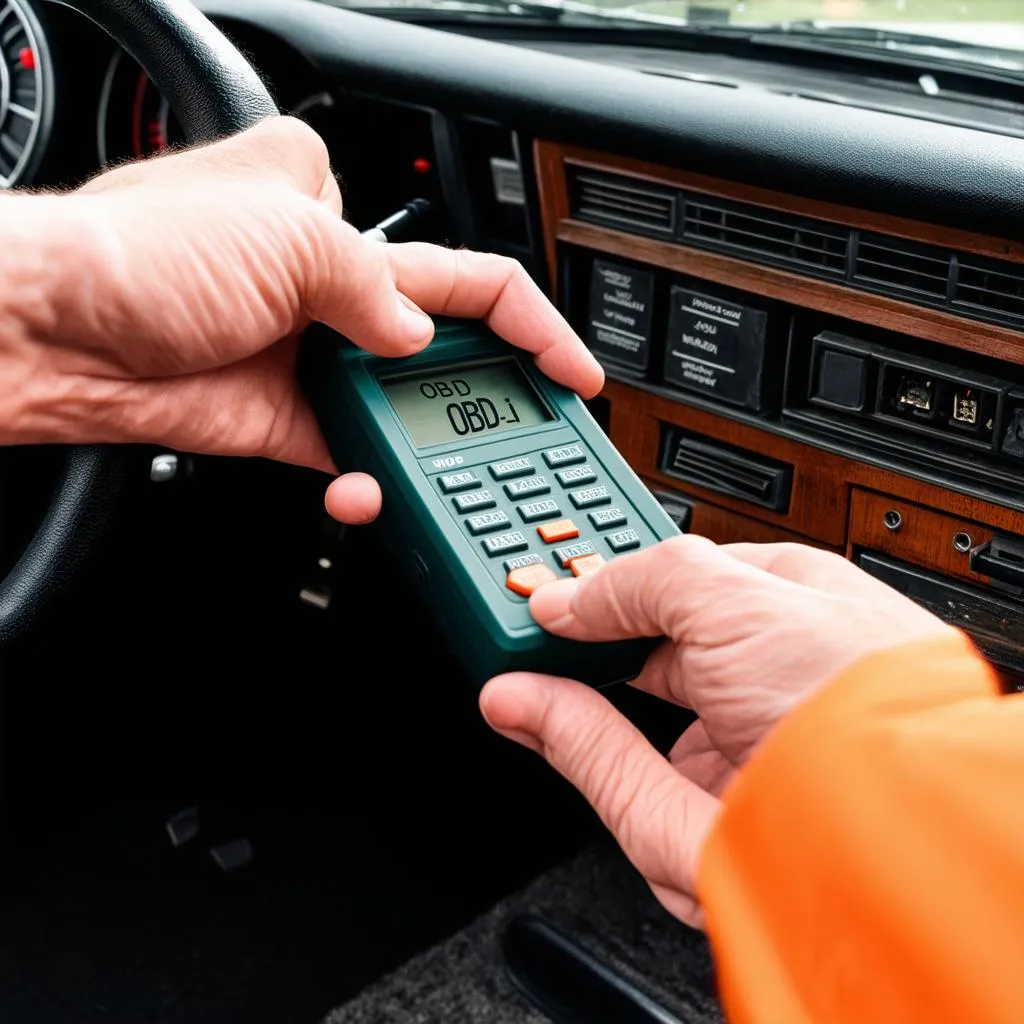Experiencing the frustration of a malfunctioning power seat in your sleek 2002 Mercedes CL500? You’re not alone. This issue is a common problem for many CL500 owners. Fortunately, it’s often a simple fix you can tackle yourself with a little guidance. This comprehensive guide will walk you through the steps to diagnose and repair your power seat, getting you back to cruising in comfort.
Understanding the Common Culprits
Before diving into the repair process, it’s essential to understand what’s causing the issue. Several components can lead to power seat problems in a 2002 Mercedes CL500:
- Faulty Seat Switch: The most likely culprit is a worn-out or broken seat switch. Years of use can wear down the internal contacts, leading to intermittent functionality or complete failure.
- Blown Fuse: A blown fuse in the power seat circuit can interrupt power flow, rendering the seat inoperable.
- Loose or Corroded Wiring: Over time, the wiring harness connecting the seat motor and controls can become loose, corroded, or damaged, disrupting the electrical signal.
- Malfunctioning Seat Motor: While less common, a failing seat motor can prevent the seat from moving in one or more directions.
Identifying the Problem
Accurately diagnosing the issue is crucial before attempting any repairs. Here’s a step-by-step approach:
- Check the Seat Switch: Start by inspecting the seat switch for any visible damage or wear. Press each switch direction firmly to check for responsiveness.
- Inspect the Fuses: Locate the fuse box, typically in the dashboard or engine bay, and consult your owner’s manual to identify the power seat fuse. Examine it for any signs of a break or burn mark.
- Examine the Wiring: Carefully inspect the wiring harness beneath the seat for any loose connections, corrosion, or damage. Pay close attention to areas where the wires bend or flex.
- Listen for Motor Sounds: With the ignition on, try operating the seat controls while listening for any sounds from the seat motor. A clicking or grinding sound might indicate a motor issue.
mercedes-cl500-fuse-box|car fuse box|Close-up photo of a car fuse box, with the fuse for the power seat highlighted.
Pro Tip
“Using a diagnostic tool like those offered by Cardiagtech can help pinpoint the exact location of an electrical fault in the power seat system,” advises Michael Jones, automotive engineer and author of “The Complete Guide to Automotive Electrical Systems.”
Tools and Materials You’ll Need
Before you begin the repair, gather the following tools and materials:
- Screwdriver set (Phillips and flathead)
- Socket set
- Multimeter
- Electrical tape
- Wire strippers/crimpers
- Replacement seat switch (if necessary)
- Replacement fuse (if necessary)
- Protective gloves
car-repair-tools|tools for car repair|Photo of a set of tools for car repair, including a screwdriver set, socket set, multimeter, electrical tape, and wire strippers.
Getting Down to the Fix
Once you’ve identified the root cause, follow these steps to get your power seat working again:
1. Replacing a Faulty Seat Switch
- Disconnect the negative battery cable.
- Remove the plastic trim panel covering the seat switch.
- Disconnect the electrical connector from the switch.
- Unscrew and remove the old switch.
- Install the new switch, reversing the removal steps.
- Reconnect the battery and test the seat.
2. Replacing a Blown Fuse
- Locate the correct fuse in the fuse box.
- Use a fuse puller or needle-nose pliers to remove the blown fuse.
- Install a new fuse with the same amperage rating.
- Check the seat functionality.
3. Repairing or Replacing Wiring
- Disconnect the negative battery cable.
- Carefully detach the affected wiring harness connector.
- Repair any damaged wires or replace the entire harness section.
- Apply electrical tape to secure and insulate any repairs.
- Reconnect the wiring harness and battery.
car-seat-motor|electric car seat motor|Photo of an electric car seat motor, showing the wiring harness connected to it.
4. Addressing Seat Motor Issues
- Replacing the seat motor is often the best solution for a failing motor.
- This repair is more complex and may require professional assistance.
Frequently Asked Questions
Q: My power seat works intermittently. What could be the cause?
A: Intermittent issues often point to a loose connection, a failing switch, or a worn motor. Start by inspecting the wiring harness for loose or corroded connections.
Q: Can I use any fuse to replace a blown power seat fuse?
A: It’s crucial to use a replacement fuse with the same amperage rating as the original. Using a fuse with a different rating can cause electrical damage.
Q: How do I know if my seat motor is bad?
A: A failing seat motor might emit a clicking, grinding, or humming sound when the switch is activated. If the seat moves very slowly or not at all, the motor could be faulty.
Conclusion
Troubleshooting and repairing a power seat in your 2002 Mercedes CL500 is achievable with patience and the right guidance. By following the steps outlined in this guide, you can get your seat back in working order and enjoy a more comfortable driving experience.
Remember, if you’re uncomfortable tackling these repairs yourself, it’s always best to consult a qualified mechanic. And don’t forget that using a reliable diagnostic tool like those offered by CARDIAGTECH can make the process much smoother.


